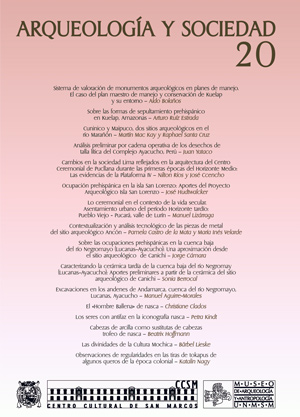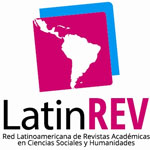PREHISPANIC OCCUPATION IN SAN LORENZO ISLAND: INPUTS OF SAN LORENZO ARCHAEOLOGICAL PROJECT
DOI:
https://doi.org/10.15381/arqueolsoc.2009n20.e12433Keywords:
San Lorenzo Island Project, caleta de la Cruz, cementery, weaver woman, temporary settlement, propitiatory rites, ritual and economic functions.Abstract
The cultural evidences registered and investigated for the San Lorenzo Island Archaeological Project suggest that during island’s prehispanic occupation, the main settlement concentrated on the southern tip of the island, at Caleta de la Cruz. There, a temporary fisher’s camp – and/or guano collectors -- and a cemetery were found. Chronologically, this occupation dates from the end of the Late Intermediate Period through the whole Late Horizon (XV – XVI Centuries A.D.). The presence of spondylus’s fragment and other objects with representations of fishes suggests rites with the cult to the sea and the islands, as well as with the “marine fertility”. The hypothesis of rites to the sea and the islands is sustained with the written sources of the colony, mainly with texts of century XVI and XVII. It is possible that during the prehispanic time the San Lorenzo island had ritual and economic use, which were integrated and complementary functions to each other.Downloads
Published
Issue
Section
License
Copyright (c) 2009 José Hudtwalcker Morán

This work is licensed under a Creative Commons Attribution-NonCommercial-ShareAlike 4.0 International License.
THE AUTHORS RETAIN THEIR RIGHTS:
a. The authors retain their trademark and patent rights, and also on any process or procedure described in the article.
b. The authors retain the right to share, copy, distribute, perform and publicly communicate the article published in the Arqueología y Sociedad (for example, place it in an institutional repository or publish it in a book), with an acknowledgment of its initial publication in the Arqueología y Sociedad.
c. The authors retain the right to make a subsequent publication of their work, to use the article or any part of it (for example: a compilation of their works, notes for conferences, thesis, or for a book), provided that they indicate the source. of publication (authors of the work, journal, volume, number and date).
















